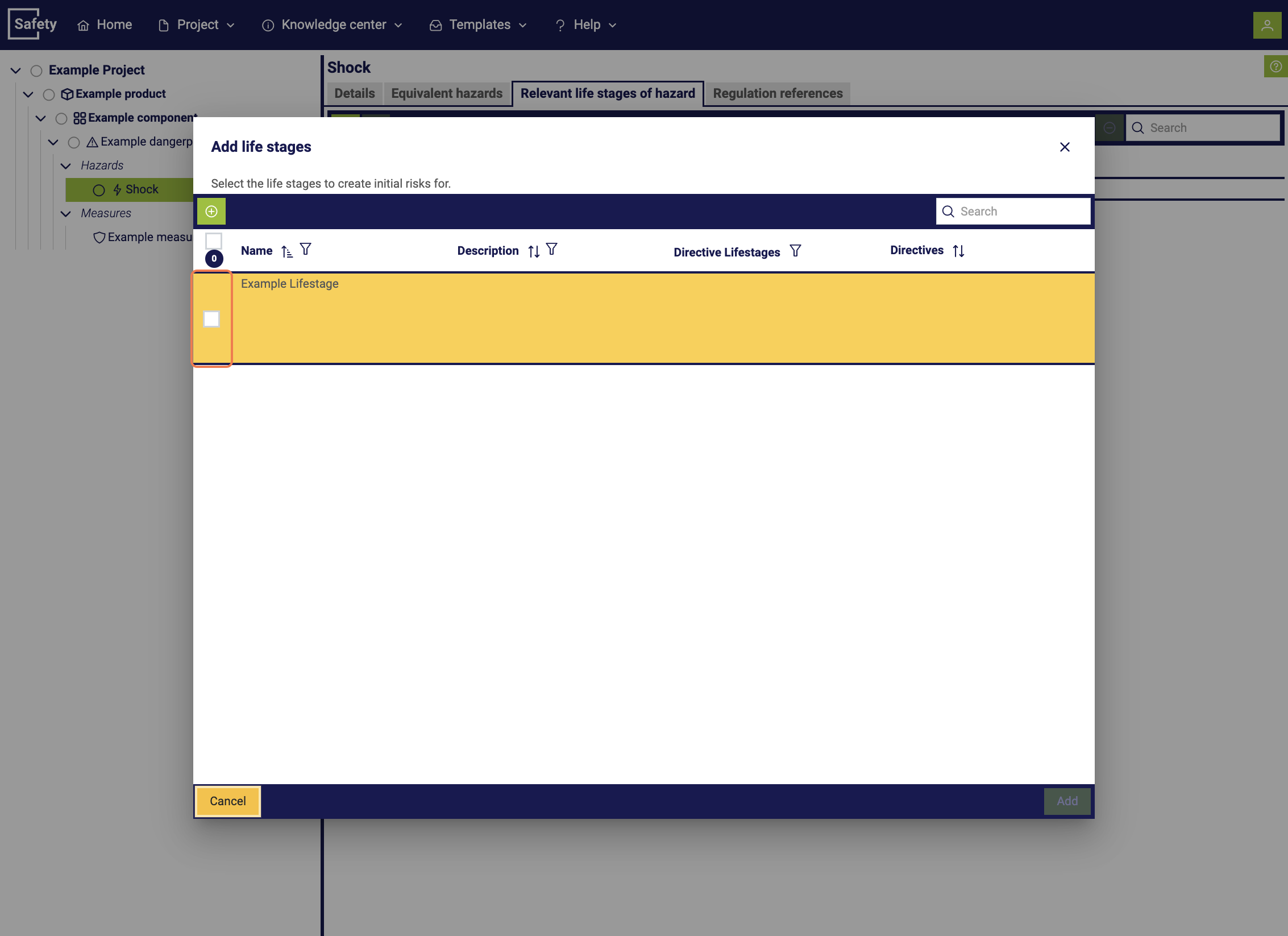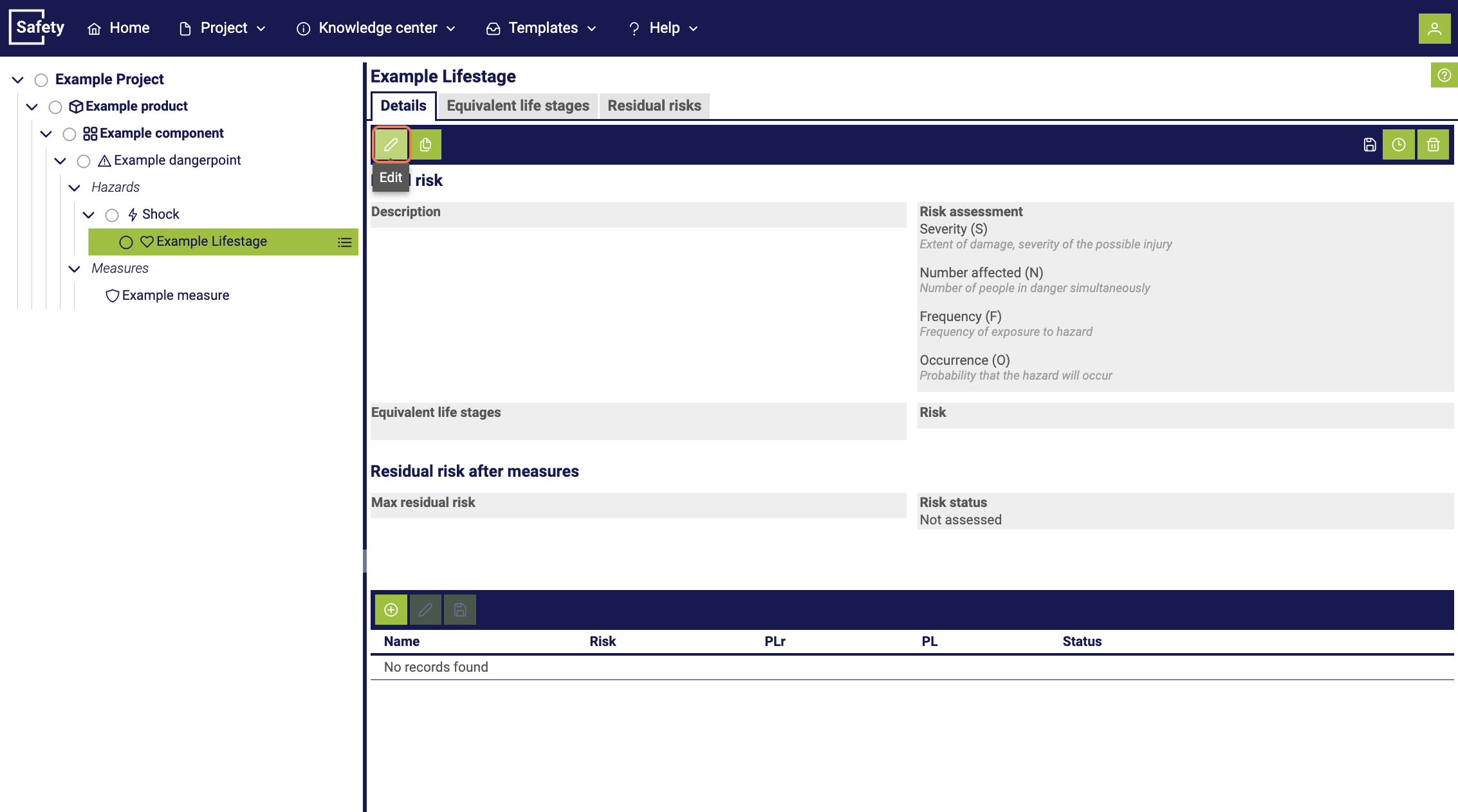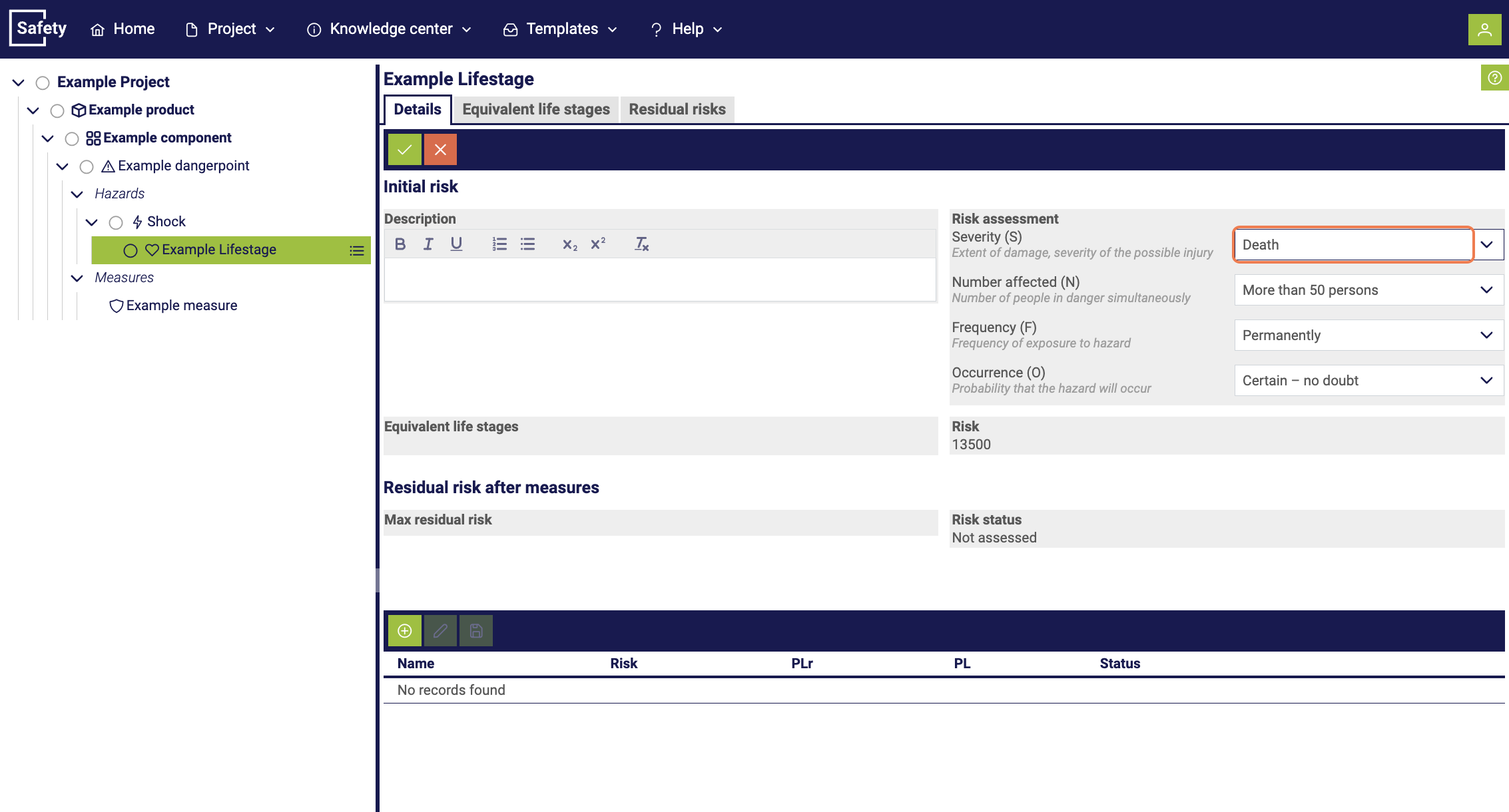Determine initial risk

To perform a comprehensive risk assessment, first assign a specific life stage to a potential hazard. This step is crucial, as it allows the potential risks to be understood in the context of the respective life stage and appropriate measures to be taken to reduce the risk. By assigning life stages to hazards, a more precise analysis is made possible, which enables targeted and effective safety measures to be taken.

Within the hazard management, it is possible to initiate the process of adding a life stage to refine the risk assessment and optimize safety measures.

In the next step, the corresponding life stage is selected from a predefined selection.

By selecting the life stage, you get the opportunity to determine the initial risk more precisely. This step enables you to analyze and evaluate the potential risks in the context of the selected life stage.
The initial risk of a life stage refers to the risk that exists at the beginning or at the start of a specific phase in the life cycle of a product or installation. It describes the potential hazards and risks that exist at this point in time, before measures to reduce or control the risk are taken. The initial risk forms the basis for risk assessment and the development of safety measures during a specific phase in the life cycle of the product or installation.

Subsequently, the risk is evaluated in terms of potential damage, the number of people affected, frequency and probability. Based on this evaluation, a residual risk and a specific risk status are determined.